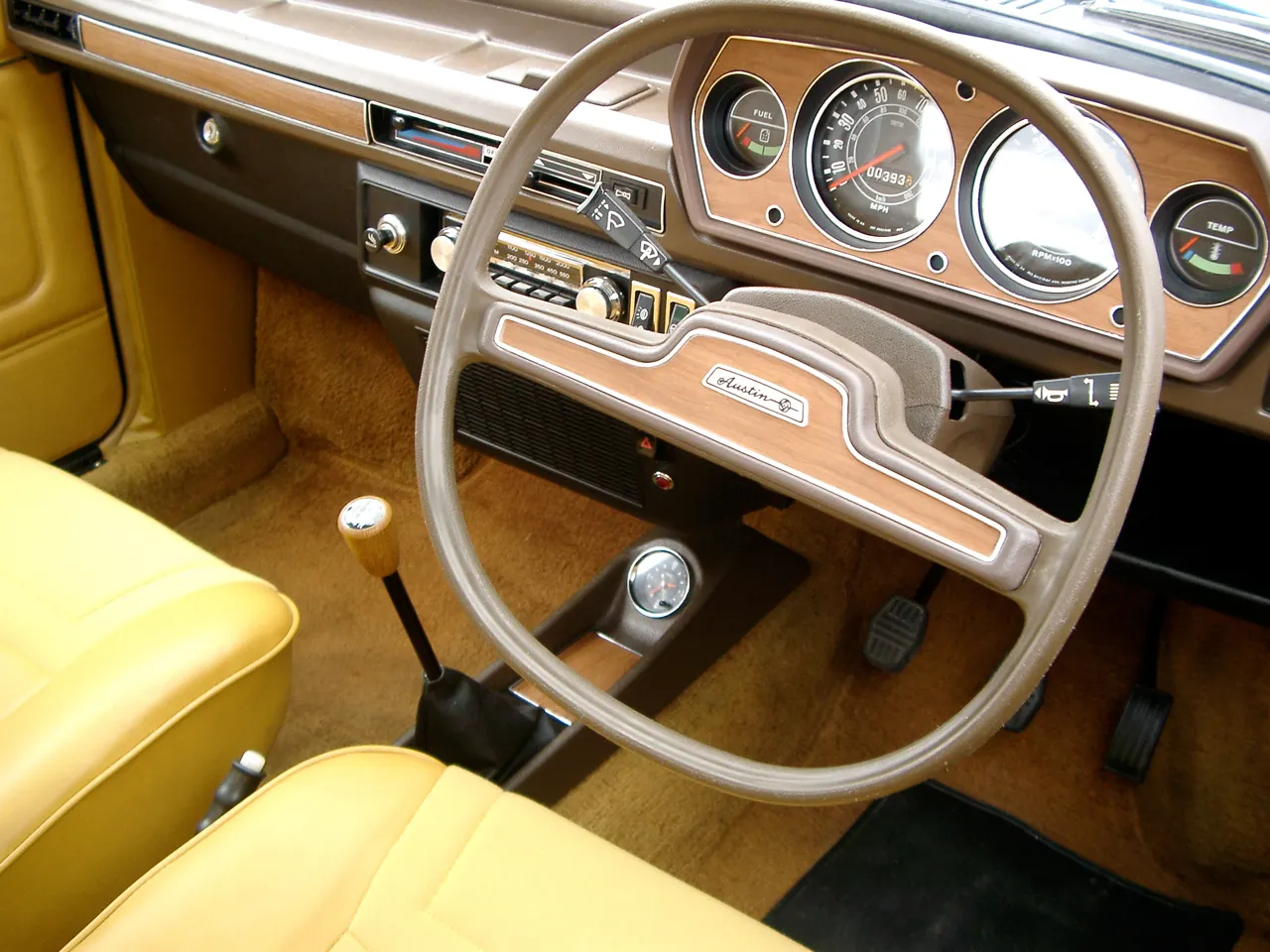Reinventing The Wheel

The steering wheel is one of those things you're not supposed to notice. For a hundred years, it has been a simple, effective, and, most importantly, round object. And then, in 1973, the state-owned industrial giant that was British Leyland, in a moment of spectacular madness, decided that the circle had had its day. For their new family car, the Austin Allegro, they invented the "Quartic" steering wheel. It was a rounded-off square, a shape that was supposed to be futuristic and clever. Instead, it became a national joke, a symbol of a car company that had lost the plot.
A Solution to a Problem That Shouldn't Have Existed
The story of the Quartic wheel begins with the difficult birth of the Austin Allegro. This was the car tasked with replacing the fantastically successful Austin 1100/1300, which for years had been Britain's best-selling car. The new car, designed by Harris Mann, was a dumpy, high-sided machine that was already compromised before it even hit the production line. To save money, it was forced to use a bulky engine and heater from an old model, which meant the interior was cramped and the steering column was set too low.
A normal car company might have spent a bit more money and engineered a proper solution. But this was British Leyland, where engineering innovation was pursued with the single-minded determination of a man trying to thread a needle while wearing oven mitts. Their solution was to reinvent the wheel. Literally. In Spring 1972, George Turnbull brought back to the Austin Drawing Office "one of David Bache's more way-out design ideas, a steering wheel consisting of four curves joined together by four straight lines, similar to the shape of a television screen."
The Great British Engineering Contradiction
When the Allegro was launched, British Leyland's marketing department tried to sell the Quartic wheel as a piece of "avant-garde and hi-tech" design. Vic Hammond, Austin Morris' Chief Designer for Interiors, defended it with the earnest conviction of a man explaining why square sandwiches taste better: "For a start, it's far from square. The usual circular form of the steering wheel is simply flattened out a little. We did it because we knew most drivers preferred a relatively small wheel, yet we wanted them to be able to see the instruments."
This perfectly captured British industrial culture of the 1970s - the peculiar combination of genuine innovation with spectacular misjudgment of what customers actually wanted. Here was a company that could design brilliant suspension systems and create genuinely advanced engineering solutions, yet somehow convinced itself that the buying public was crying out for geometric steering wheels. The truth was rather different: people didn't like it. It may have enabled unhindered visibility of the instruments, but unless you were in an Allegro 1750 Sports Special, there were never enough dials to fill the dashboard anyway.
The Press Verdict
In the summer of 1972, senior technical writers from the British motoring press were invited to Longbridge to see the Allegro. They were unanimous in their distaste for the Quartic steering wheel. This was a PR exercise that backfired magnificently - Austin had hoped to win approval by offering journalists an inside track on development, but even these hardened professionals were put off by the strange contraption they were expected to grip.
The press was merciless, savagely ridiculing the wheel as a symbol of everything wrong with British Leyland's approach to car design. People started joking that the Allegro had "square wheels," a myth that persists to this day. Her Majesty's Police force, who had ordered 657 Allegros for Metropolitan and Panda car duties, were quietly removing the Quartic wheels almost immediately. Embarrassed officers explained that "it wasn't as if the Quartic wheel was bad, just that it didn't suit the Police way of driving" - diplomatic language for admitting they hated it too.
The Quiet Retreat
The public backlash was so severe that British Leyland was forced into a quiet, humiliating retreat. After just 18 months, the Quartic wheel was silently dropped from the Allegro and replaced with a conventional, and mercifully round, steering wheel. The company never officially admitted its mistake; the square-ish wheel just sort of... disappeared. In a final act of corporate incompetence, some of the owner's manuals for later, round-wheeled Allegros still proudly described the futuristic benefits of the now-defunct Quartic.
This episode revealed something profound about British attitudes toward innovation. The same culture that produced brilliant engineering solutions like Hydragas suspension and front-wheel drive also created this magnificent commercial misjudgment. British industry had a genius for getting the engineering right while timing the application spectacularly wrong - a talent that would define much of the country's industrial decline.
A Legacy of Misunderstood Innovation
The Quartic wheel has gone down in history as one of the great follies of the British motor industry. It is a perfect symbol of a company that was so full of clever, but often misguided, ideas that it forgot to ask the most important question: will anyone actually want to buy this?
And yet, in a final, ironic twist, the world has finally, sort of, caught up with British Leyland's mad idea. Many modern cars, particularly those with sporting intent, now have flattened, non-round steering wheels. They are designed, just as the Quartic was, to improve knee clearance and the view of the instruments. Formula 1 cars routinely use square steering wheels. It seems that British Leyland's idea wasn't entirely stupid after all. It was just about forty years too early, fitted to the wrong car, and introduced to a market that hadn't been prepared for such radical thinking.




